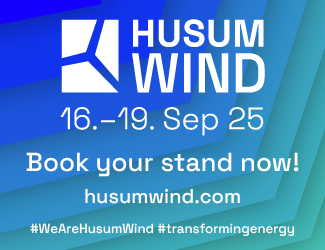Recently, shortsea operator Samskip revealed its role in the autonomous and hybrid project »Seashuttle«. HANSA reveals more details as well as open questions
First and foremost, as this question persistently keeps coming up when it comes to such projects: Samskip and its partner[ds_preview] do not plan to operate a ship without crew – at least for the moment. Autonomous, yes; unmanned, no. The size of crew has not been determined, yet, the operator states. No pilots will be used in the intended trading area as the ship officers will have pilot exemption licenses.
Seashuttle partners include logistics consultant FlowChange, technology group Kongsberg Maritime, hydrogen integrator HYON and Massterly, a Kongsberg Maritime/Wilhelmsen venture. Europe’s largest multimodal operator has been named lead partner in the project, which is seeking to bring emissions-free, autonomous container ships to the market that also operate at a profit.
Open questions remain
In the first phase it is expected that crew on board will take sole responsibility for the ship’s control with a shore centre monitoring the operation. Later, subject to the development of the appropriate rules, shore operations are expected to take a control centre function for a part-time autonomous operation of the vessel. »However, there will always be crew on board, on ›stand-by‹«, Samskip emphasizes. Ship-to-shore crane loading and unloading operations are expected to be accomplished autonomously.
The other question discussed equally often ist that of liability in cases of emergency resulting from technical problems or failures on board. It is left unanswered.
Are Grathen, Managing Director of Samskip Norway already said: »Aspirations for sustainability are best encouraged by door-to-door services that provided cost-effective and scalable competition with truck-ferry options, feeding into a pan-European distribution network.« Automation of key shipboard activities would also bring cost savings, as exporters increasingly seek lower and even zero emissions transport solutions, but they need to be assured on reliability, frequency, efficiency and cost effectiveness.
Questioned which key shipboard activities are planned to be automated, Samskip now confirms, that this has not yet been determined and is subject to evaluation within the R&D project. All shipboard activities such as navigation, manoeuvring and docking will be evaluated to investigate optimum levels of automation, including benefits of autonomous operations under manual supervision either from the bridge or from a remote shore control centre.
»IMO rules are not ready and the ship must comply with national rules. Special permits are expected to be introduced for Norwegian waters that will open the way to explore new opportunities«, it is said. Grathen adds: »Once operational, there is no reason why zero emissions ships should not target the 2,000 truck loads passing through Norwegian ports every day.«
The vessels will have capacity for 170 x 45 ft containers, or 350 TEU. However, final details have to be determined after talks with customers about frequency and the intended trade.
The newbuildings will draw on hydrogen fuel cells for their propulsion power. The propulsion will be achieved through a hybrid solution, with main engines running on MGO and/or LNG, supported by power from both batteries and hydrogen fuel cells. The objective is for zero emission fuel cells/batteries to contribute 20% of the power load in a typical round trip. Again: The final systems configuration will be developed within the R&D project. No main engine supplier has been chosen at this stage. Swedish fuel cell manufacturer PowerCell will participate through its joint venture interest in HYON.
Final ports of call are yet to be determined as well, but it is already decided that the fuel cell technology will convert hydrogen into power for propulsion. The gas will be generated through electrolysis at a Norwegian port. For the moment, the project envisages zero emissions during 20% of a round trip between Poland and the Oslo Fjord – sufficient for all operations in Norwegian waters. That proportion of 20% emission-free time is supposed to grow as more stations supply hydrogen along the route.














